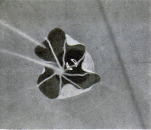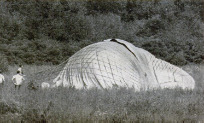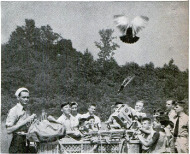-
Title (Dublin Core)
-
Balloon flights train navy airman
-
Article Title and/or Image Caption (Dublin Core)
-
Balloon flights train navy airman
-
extracted text (Extract Text)
-
WITH dive bombers and 400-mile-an-
hour fighting planes in the head- |
| lines, few people know that the
drifting free balloon, the earliest of all
aids to aérial warfare, is still an essential
link in America’s defense program. From
the field at Lakehurst, N. J., where the bal-
loon school of the U. S. Navy is entering
its twentieth year, silver-hued gas bags
have traveled a total of more than 25,000
miles in training flights. Because a blimp
with a disabled engine must be handled like
a free balloon, all men in the Navy's lighter-than-air
service begin with a balloon course at the Lakehurst
school.
The six 35,000-cubic-foot balloons used in the work
are inflated with helium. As one of them is filled for
a flight, the ground crew adjusts the netting carefully
so the five-foot-square wicker basket is exactly cen-
tered. With as many as four students and an instruc-
tor squeezed into the basket, the ground crew “walks”
the balloon, towering seventy feet in the air, out onto
the field from the hangar in which it was inflated.
Instruments, road maps, a woodsman’s compass, and
carrier pigeons are loaded aboard. Then comes the
start. A shower of sand ballast, a slight upward push
by the ground crew, and the great gas bubble soars
away. So silently does it drift through the sky that
men calling upward from the ground can be heard
distinctly at an altitude of 1,000 feet.
During the first five flights, the student watches
and learns. On each trip, he performs some new task
in connection with navigating the balloon. To rise, he
throws overboard ballast; to descend, he lets out gas
through a valve at the top of the bag. Throughout a
flight, there is a continual small seepage of gas so that
ballast has to be discarded from time to time to keep
afloat. To a balloon, ballast is what fuel is to a plane;
when it is exhausted, the flight must end.
Some years ago, before helium was used
in Navy balloons, Lieutenant Commander
Samuel M. Bailey and two students from
Lakehurst were riding under a hydrogen-
filled gas bag in pitch darkness over the
Alleghenies. For hours, their balloon had
‘een losing lift. At one o'clock in the morn-
ing, Bailey decided to “settle im” for a
landing. The basket was four feet from the
ground when high-tension wires loomed
directly ahead. Bulging with thousands of
cubic feet of explosive hydrogen, the great
bag struck the cables. At the same instant,
both students leaped. The balloon bounced
back and then shot like a cannon ball
toward the sky. By hanging to the valve
rope all the way up, Bailey stopped the
zoom at 8,000 feet and descended unharmed
on a mountaintop farm.
Overnight flights are next to the last
ones made by students at the Lakehurst
school. As a special precaution, the Navy
sends a warning to all air-line pilots to
watch out for the balloons. Two lights, a
steady white one and a flashing red one,
are suspended under the baskets. Both are
battery-run. Because of the more even tem-
perature at night, two bags of ballast will
often carry a balloon through the hours of
darkness. On the other hand, during
one day trip, Lieutenant Commander
R. F. Tyler had to throw out five
bags—150 pounds—of ballast from
an altitude of 500 feet to keep from
being carried to earth by a strong
downdraft over a cool swamp a few
‘miles from Lakehurst.
Solo flights, which end the train-
ing, are never started if the breeze
is blowing faster than fifteen miles
an hour, and all trips begin only
when the winds blow from an east
erly direction carrying the balloons
inland, away from the near-by At-
lantic. With the wind as navigator,
carrying the gas bag in whichever
direction it blows, the Navy balloon
riders are never sure where they
will land. One crew, last year, de-
scended in the middle of a cemetery;
another in brambles six feet high.
Whenever possible, the landing is
made just beyond woods, So the
trees form a windbreak. Valving out
gas, the pilot brings the basket to
within fifteen feet of the ground.
Then he jerks the ripcord, tearing
out a long panel in the side of the
bag. The gas rushes out, the bag
collapses, and the flight is over.
At the end of every overnight
journey, pigeons are released to
carry back word of the landing lo-
cation, and the bag and basket are
shipped home by freight. During
shorter, daytime trips, a truck fol-
lows the drifting balloon to pick up
the equipment and crew.
The simplest job these Navy
truckmen ever had came at the end
of one training flight last fall. The
balloon took off in the morning and,
drifting west on a sea breeze, disap-
peared. Late in the afternoon, it re-
appeared over the field, riding a
wind that blew in the opposite direc-
tion at a higher level, and descended
for a landing only a few hundred
yards from its starting point!
-
Contributor (Dublin Core)
-
Robert E. Martin (article writer)
-
Language (Dublin Core)
-
eng
-
Date Issued (Dublin Core)
-
1940-11
-
pages (Bibliographic Ontology)
-
86-89
-
Rights (Dublin Core)
-
Public domain
-
Archived by (Dublin Core)
-
Sami Akbiyik
-
Marco Bortolami (editor)
 Popular Science Monthly. v. 137, n. 5 1940
Popular Science Monthly. v. 137, n. 5 1940
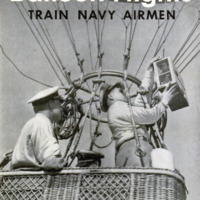 Ekran Resmi 2022-02-01 12.55.02.png
Ekran Resmi 2022-02-01 12.55.02.png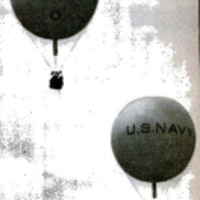 Ekran Resmi 2022-02-01 12.55.09.png
Ekran Resmi 2022-02-01 12.55.09.png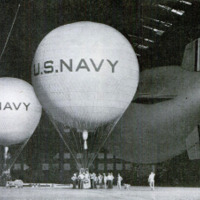 Ekran Resmi 2022-02-01 12.55.16.png
Ekran Resmi 2022-02-01 12.55.16.png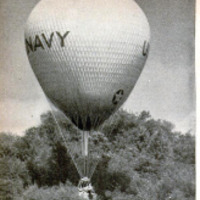 Ekran Resmi 2022-02-01 12.55.23.png
Ekran Resmi 2022-02-01 12.55.23.png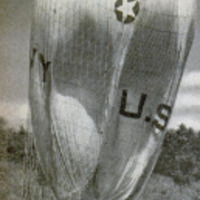 Ekran Resmi 2022-02-01 12.55.30.png
Ekran Resmi 2022-02-01 12.55.30.png Ekran Resmi 2022-02-01 12.55.35.png
Ekran Resmi 2022-02-01 12.55.35.png Ekran Resmi 2022-02-01 12.55.41.png
Ekran Resmi 2022-02-01 12.55.41.png Ekran Resmi 2022-02-01 12.55.46.png
Ekran Resmi 2022-02-01 12.55.46.png Ekran Resmi 2022-02-01 12.55.55.png
Ekran Resmi 2022-02-01 12.55.55.png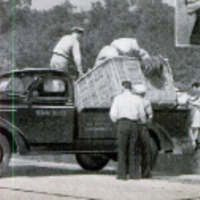 Ekran Resmi 2022-02-01 12.56.01.png
Ekran Resmi 2022-02-01 12.56.01.png





